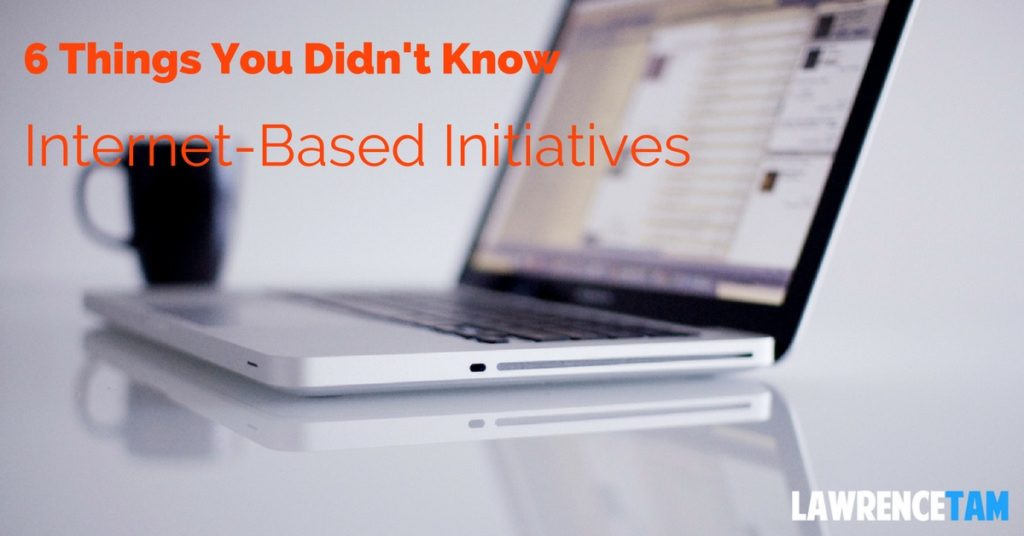What if I said that you could create meaningful social impact from home? Contrary to popular belief, there is a worthwhile alternative to “armchair activism.”
While doubts about “slacktivism” are well-founded, the truth is that the Internet has redefined social entrepreneurship by breaking down preexisting barriers to entry. Now, anyone – regardless of age or industry knowledge – can meaningfully change the world.
Internet-based impact can actually rival on-the-ground change; the key is to do it right. As the co-founder of two Internet-based initiatives, I have witnessed first-hand the power of technology to accelerate social change. But this unorthodox way of innovating is not without challenges. Done wrong, it can produce more harm than good. Below, are 6 best practices that I've learned (the hard way) as an Internet-based social entrepreneur.

1. Hire doers.
Internet-based initiatives thrive with doers – not talkers or “idea people.” In a startup where team members set their own hours and work from around the globe, success will depend on your team's time-management skills. As you decide who to hire, prioritize an applicant's demonstrated ability to follow-through over mere potential to ideate. Whenever I'm reviewing a resume, I always look for two things: volume of existing time commitments (too many and chances of follow-through plummet) and evidence that this person actually gets things done. Hire people that live the notion: “Actions speak louder than words.” (It's a cliché for a reason.)
2. Nothing can replace physical face-to-face communication, but Google Hangouts comes closest.
Once you have a strong team, you will need to establish communication channels. When communicating with a team scattered across distance and time zones, it can seem tempting to resort to email. Sure, you can respond to an email whenever is convenient for you, and often from an “office” where your pajamas are just as good as business casual.
But the truth is face-to-face communication works best – even if it needs to happen through a screen. As a remote manager, you will never truly know if your team is reading your emails, Slack messages, or Google Docs. This is why it's so essential to make videoconferencing a regular part of your communication strategy. For example, I hold monthly director meetings via Google Hangouts. We won't always have the luxury to meet in-person, but Hangouts allows us to read teammates' facial expressions, body language, and tone in a way that written correspondence never can. You may have to reserve an hour of your day and put in some extra effort to look like a human, but you'll get faster and more congruous resolutions with videoconferencing than a drawn out email thread.
3. Slide decks are your new best friend.
Slide decks go hand in hand with an effective videoconference. When a videoconference turns into a conversation between more than two people, it can be difficult to avoid tangents or getting bogged down in the details. Presenting a well-assembled slide deck (via Hangout's “Screenshare”) will help you stick to your agenda and keep conversation moving forward. Decks also serve as useful references for teammates post-Hangouts. Maybe someone had to run to the bathroom, log-off early, or was having trouble maintaining a stable Internet connection. Regardless, I've found that there is only one measure that adequately compensates for these distractions: a deck detailed enough to stand on its own. Don't forget to invite your team to view your deck beforehand so that they can come as prepared as possible or even contribute a slide of their own to the deck.
4. Organization, organization, organization.
Even if you maintain regular video calls, in a world without set hours or in-person meetings, your team will frequently perform tasks alone. Compensate for this lack of face-to-face time by writing down your initiative's processes and systems – from your organization's core values to how team members should go about interacting with the media. For example, I created an “Info” folder in my team's shared Google Drive. This folder is a perfect place to house topic-specific subfolders, such as: “Finances,” “Team Meeting Slides,” “Press/Media,” “Policy & Protocols,” and “Directories.” To maximize transparency, include an initiative-wide “Glossary” and conversational “Welcome to the ‘Info Folder'!” Google Doc, to serve as a table of contents for the entire folder. Sure, every team member might not find each resource here directly relevant to their role, but at least the information is available for anyone who wants it. Staying organized will not only help to keep teammates informed but it will also streamline virtually onboarding new hires.
5. Solicit ongoing feedback.
Once you've started implementing these guidelines, it might be time to check-in and see how you're doing. What's going well? What's driving your team insane? You need to know these things to run any successful organization. But as a remote manager, you are already at a disadvantage: team chemistry and company culture is much more difficult to establish virtually than in-person. Consequently, remote team members are typically less incline
d to speak up (or email) if there is something wrong or if they see room for improvement. Often the only way to assess how things are going in an Internet-based initiative is to ask. I do this by creating a Google Form and emailing it to my teammates to complete from home, then following up on specifics via a video call.
6. Don't be fooled: location-specific knowledge is still invaluable.
Even the most successful online initiatives benefit from traditional on-the-ground tactics. For example, although my initiative targets users living across the nation and abroad, we piloted our service in Seattle. Narrowing our focus from an international pool of online users to a local human subset has allowed us to employ a location-specific marketing strategy. Obtaining any feet on the ground – from a few volunteers to an actual office - allows you to understand the nuances of your users' environment. For example, we use our networks in Seattle to identify the most relevant local media outlets and search engine keywords for our target audience. We then use this location-specific knowledge to inform our online strategy. Working on a local scale provides a testing ground to refine your service before expanding operations.
Internet-based initiatives are the future for a reason. They allow teams the flexibility to create impact on their own schedules and consequently, open the door to an entire group of people who would have never pursued entrepreneurship otherwise. It's not that we are replacing our on-the-ground counterparts, but rather taking the best of what they have to offer and combining them with the best of the Internet.
—-
Thanks to Katie for producing this content for our blog. If you found this content valuable please leave a comment below or follow her on twitter.com/k
 Katie Sgarro is a writer and social entrepreneur. She is Co-Founder & President of AsylumConnect and Co-Founder of BelieveAchieve. To learn more about Katie, visit her personal website at: www.katiesgarro.com.
Katie Sgarro is a writer and social entrepreneur. She is Co-Founder & President of AsylumConnect and Co-Founder of BelieveAchieve. To learn more about Katie, visit her personal website at: www.katiesgarro.com.



0 Comments